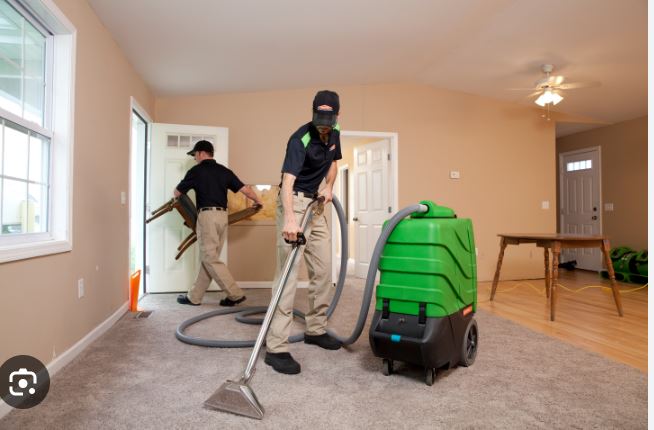Water is essential for life, but it can be disastrous when it spills on your floors and walls. Water damage is a common problem that affects many homes, and it can be caused by floods, storms, leaks, burst pipes, or other sources. Water can cause extensive damage to your property, including soaking your carpets, damaging your walls and floors, and ruining your furniture. Water can also cause mold growth, which can pose a health hazard. Therefore, it’s crucial to clean up the water damage as quickly as possible and prevent further damage. In this blog post, we’ll discuss some professional techniques for Water Damage Cleanup.
Assess the Damage: The first step in any water damage cleanup process is to assess the extent of the damage. You should inspect all the affected areas, including walls, ceilings, floors, and furniture. Look for signs of water stains, mold growth, bubbling paint, and damaged surfaces. Also, check whether the water is clean or contaminated. If the water is from a clean source, such as a burst pipe, it’s easier to clean up. However, if the water is contaminated, such as sewage or floodwater, you may need to take extra precautions to protect yourself from health risks.
Remove the Water: The second step in the water damage cleanup process is to remove the water. Depending on the amount of water, you may need to use a wet vacuum, a sump pump, or a mop and bucket. It’s vital to remove as much water as possible to minimize the damage and prevent mold growth. If the water is contaminated, use protective gear, such as gloves, goggles, and masks. Also, dispose of the contaminated materials properly.
Dry the Area: The third step in the water damage cleanup process is to dry the affected area thoroughly. Use fans, dehumidifiers, and open windows to increase air circulation and reduce the humidity. If you have access to a moisture meter, use it to monitor the moisture levels in the affected areas. It’s crucial to dry the area completely to prevent mold growth and further damage.
Clean and Disinfect: The fourth step in the water damage cleanup process is to clean and disinfect the affected areas. Use a disinfectant solution to kill bacteria and remove any mildew or mold. Clean all the surfaces, including walls, floors, furniture, and electronics. Dry the cleaned areas thoroughly before using them again.
Repair and Restoration: The final step in the water damage cleanup process is to repair and restore the damaged areas. Depending on the extent of the damage, you may need to replace drywall, insulation, carpeting, or flooring. If there’s mold growth, you need to remove it completely and prevent it from regrowing. You may also need to call in a professional restoration company to help you with the repairs and restoration.
Water damage is a common disaster that can occur to anyone at any time. Whether it’s a leaky roof, a burst pipe, or a natural disaster like a flood, water can cause serious damage to your home or business. The longer water is left sitting, the more extensive the damage can be, leading to long-term problems such as mold growth and structural damage. Hence, it is essential to take immediate action to mitigate water damage before it causes permanent harm.
In this blog post, we will discuss some professional techniques for water damage cleanup that you can use to get your home or business back to its pre-damage condition. These techniques can be used individually or in combination with others to efficiently and effectively clean up water damage.
Start by Turning off the Power: The first step to any water damage cleanup is to ensure that the power is turned off at the main breaker. Water is an excellent conductor of electricity, and when it comes into contact with electrical systems, it creates a dangerous situation that can lead to electrocution. Turning off the power before cleaning up water damage will help to avoid any potential electrical hazards.
Remove the Water: Once the power is turned off, the next step is to remove the water from the affected areas. Depending on the severity of the damage, you may want to use a combination of pumps, shop vacuums, or even buckets to remove the water from your home or business. It is essential to remove as much water as possible to prevent mold growth and other long-term damage.
Dry Out the Affected Area: After removing the water, the next step is to dry out the affected area. Place fans and dehumidifiers in the area to reduce the humidity levels and speed up the drying process. Drying out the affected area can take time, so be patient and monitor the progress regularly.
Clean and Disinfect: Once the affected area has dried out, it’s time to clean and disinfect the space. Water damage can harbor harmful bacteria and lead to the growth of mold and mildew, so it is crucial to clean and disinfect the affected area thoroughly. Use a mixture of bleach and water or a professional-grade disinfectant to ensure that the area is thoroughly clean and free from any potential pathogens.
Inspect for Further Damage: After cleaning and disinfecting the affected area, it’s essential to inspect for any further damage. Check for water damage to ceilings, walls, and floors. Inspect your electrical outlets and appliances for signs of water damage. Finally, check your HVAC system to see if it has been affected by the water damage. If you do find any further damage, contact a professional to help assess the situation and fix any issues.
Conclusion:
Water damage is a common problem that affects many homes and businesses. It can cause extensive damage to your property and pose health risks if not cleaned up properly. Therefore, it’s crucial to take quick action and use professional techniques for water damage cleanup. These techniques include assessing the damage, removing the water, drying the area, cleaning and disinfecting, and repairing and restoring the damaged areas. By following these steps, you can prevent further damage and restore your property to its pre-damage condition. Remember to always prioritize safety, protect yourself with appropriate gear, and call in professional help if needed.
Water damage can be a significant problem for any home or business. It can lead to extensive damage if not treated promptly and can negatively impact your health and the health of your family or customers. By following these techniques for water damage cleanup, you can efficiently and effectively clean up water damage and get your home or business back to normal in no time. Remember to always turn off the power, remove the water, dry out the affected area, clean and disinfect, and inspect for further damage to ensure that your home or business is safe from the potential dangers of water damage.
Write and Win: Participate in Creative writing Contest & International Essay Contest and win fabulous prizes.
















